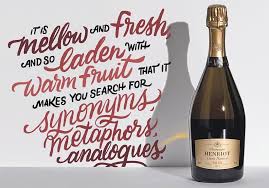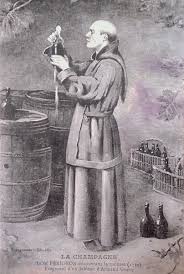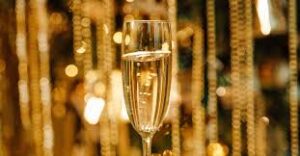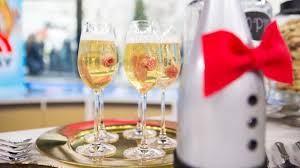
By Tequila Mockingbird
Los Angeles, CA (The Hollywood Times) 1/1/24 – New Year’s Eve has come and gone, leaving us with a wave of hope and optimism for the year ahead. As the clock struck midnight, the familiar pop of a champagne cork filled the air, and with it, the promise of fresh beginnings. Champagne—sparkling, effervescent, and full of joy—always seems to bring a sense of excitement, like a bubbly amnesia that makes us forget the past and celebrate what’s to come. So, here’s to 2025—raise your glass and cheers!
 Why Champagne Reigns Supreme on New Year’s Eve
Why Champagne Reigns Supreme on New Year’s Eve
There are several reasons why champagne has become synonymous with New Year’s Eve celebrations, blending history, tradition, and the pure joy of ringing in a new year with a glass of bubbly:
- Symbol of Prosperity
Historically, champagne was a drink reserved for the elite. In times past, it was seen as a symbol of wealth, success, and good fortune. Toasting with champagne on New Year’s Eve continues that tradition, signaling a hopeful start to the year and wishing prosperity for the months ahead. - The Festive Atmosphere
From the satisfying pop of the cork to the sight of bubbles rising in the glass, champagne immediately creates a celebratory atmosphere. Its light, sparkling nature and the familiar clink of glasses make it the perfect drink to toast the new year, adding to the sense of excitement that comes with this annual celebration. - Marketing & Tradition
Thanks to clever marketing over the years and an enduring tradition of toasting at New Year’s, champagne has solidified its place as the go-to celebratory drink. The tradition has become ingrained in popular culture, with champagne now practically synonymous with ringing in the future with style.
In essence, it’s a combination of history, celebration, and savvy marketing that has made champagne the iconic choice for New Year’s Eve toasts around the world.

Mark Cartwright (CC BY-NC-SA)
A Brief History of Champagne: From Ancient Roots to Modern Luxury
- Early Beginnings
The story of champagne begins in the 5th century when Romans planted the first vineyards in what is now the Champagne region of France. Initially, the wines produced were still, pale, and pinkish in color—far from the effervescent beverage we know today. - Royal Connections
Champagne gained significant prestige in the 17th century when it was served at the coronations of French kings in Reims, cementing its status as a drink fit for royalty.
The Rise of Sparkling Champagne: A Happy Accident
- The Sparkling Discovery
The now-famous sparkle of champagne was actually an accidental discovery. Harsh winter conditions often halted fermentation, but as the warmer spring months arrived, yeast would reactivate, producing carbon dioxide and causing the bottles to occasionally explode. Over time, this natural effervescence became one of champagne’s defining qualities. - Challenges of Early Production
In its early days, champagne was difficult to produce, as the bottles were prone to breakage due to the high pressure from the carbonation. - Dom Pérignon’s Legacy
Though not the inventor of champagne, Benedictine monk Dom Pérignon is credited with refining the production process, improving both the quality and consistency of the sparkling wine. His contributions helped transform champagne into the luxurious drink we know today.

Champagne Today: A Global Icon
Now recognized around the world, champagne stands as a symbol of celebration and luxury. Its production is strictly regulated by the Comité Interprofessionnel du Vin de Champagne (CIVC), which ensures the quality and authenticity of each bottle. Today, sipping champagne isn’t just about enjoying a drink; it’s about partaking in a long-standing tradition of elegance and festivity.
Why Do We Drink Champagne on New Year’s Eve?
- Celebration
The very nature of champagne—its bubbles, its pop, its effervescence—makes it the perfect drink for toasting the arrival of a new year. It’s inherently celebratory and mirrors the excitement and joy of the occasion. - Tradition
The tradition of drinking champagne on New Year’s Eve has been passed down through generations, further solidifying its association with marking the passage of time and welcoming fresh beginnings. - Optimism
Champagne’s sparkling bubbles symbolize renewal, hope, and optimism. They reflect the excitement of a new year and the promise of new opportunities. As the glass fills with bubbles, so too does the heart fill with hope for the future.
 So, as you sip your champagne and reflect on the year ahead, remember it’s not just about the drink; it’s about the joy, the optimism, and the promise of new beginnings. Cheers to 2025!
So, as you sip your champagne and reflect on the year ahead, remember it’s not just about the drink; it’s about the joy, the optimism, and the promise of new beginnings. Cheers to 2025!